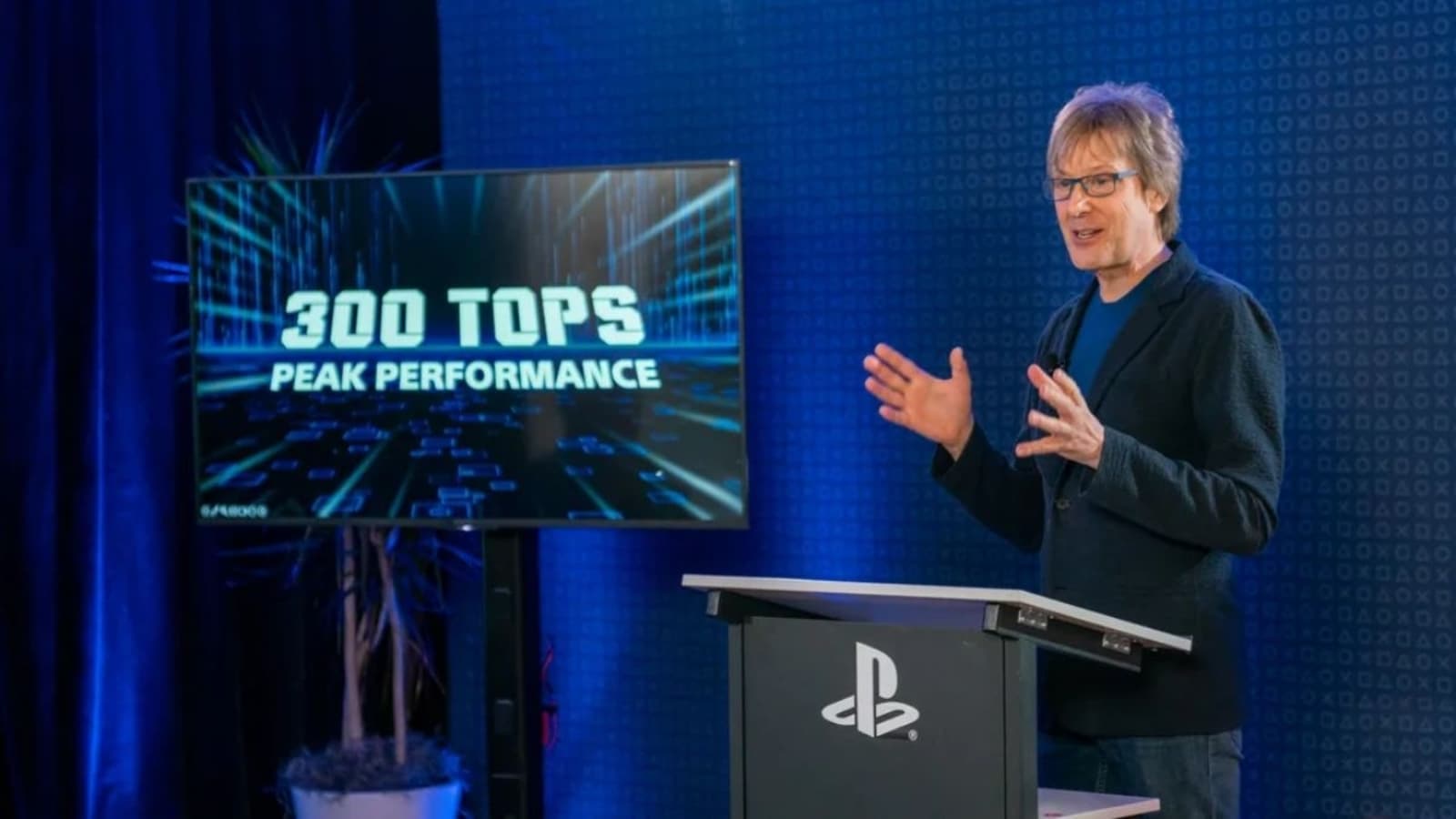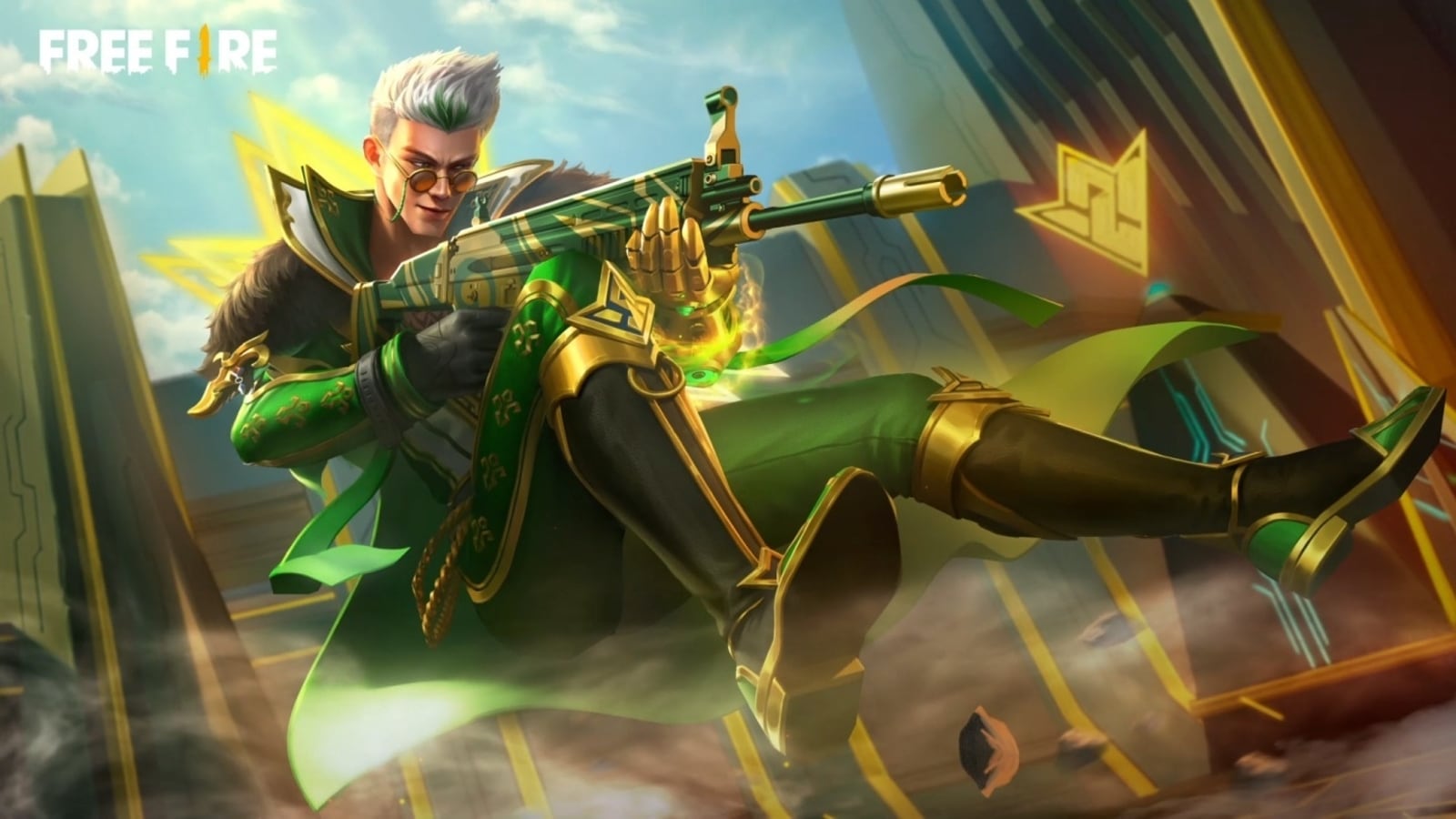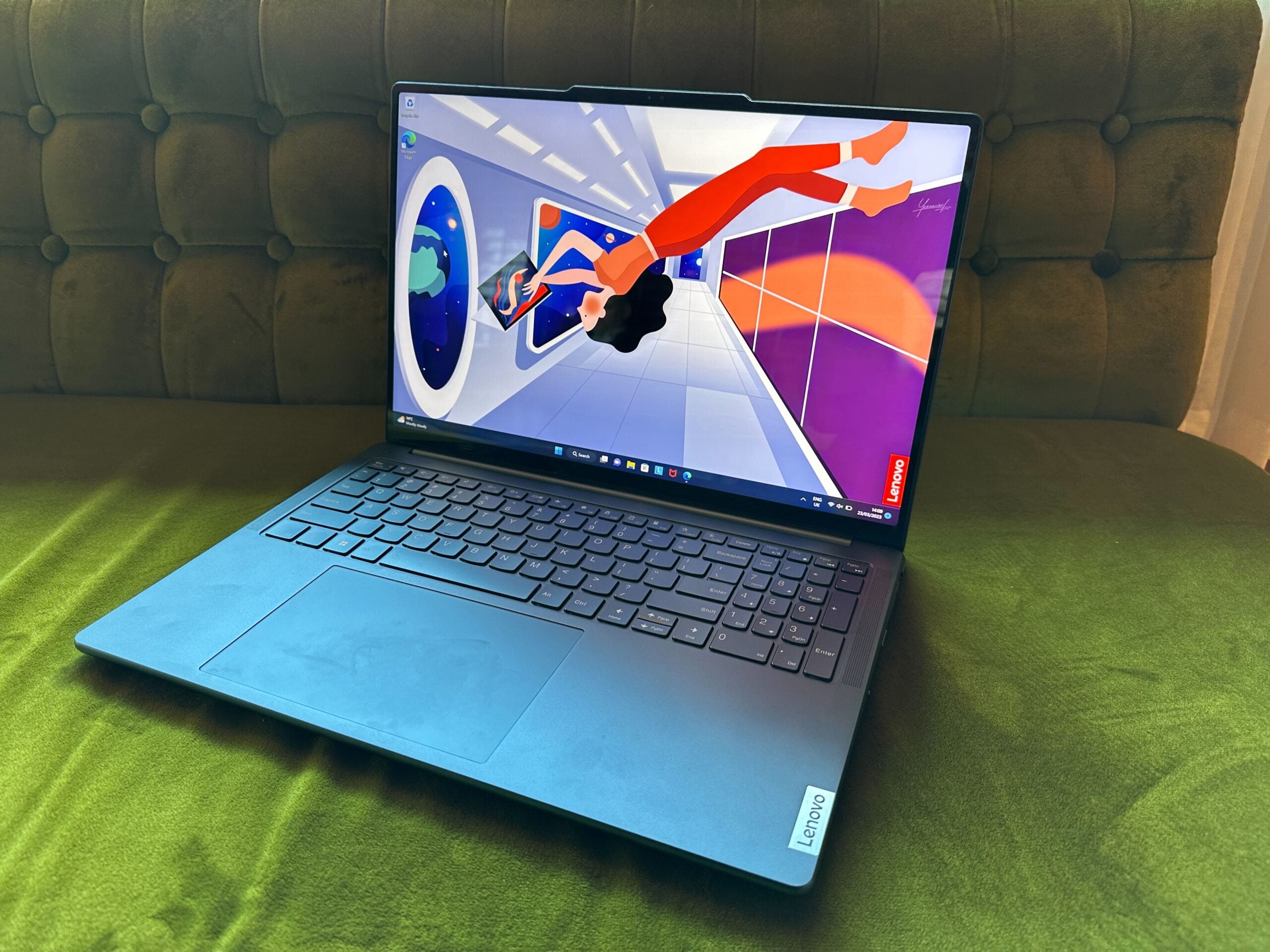The Lenovo Yoga Pro 9i (2023) is another new laptop this year offering a renewed focus on creating a graphically powerful experience, with an eye on competing against the MacBook Pro (2023). The specs look strong but the challenge is tough.
Key Features
-
Luxurious Mini LED Display:Bright and deep colours via Mini LED technology. -
Nvidia GeForce RTX 40-series graphics:Featuring up to an RTX 4070 graphics chip. -
Two different size options:Available in 14.5-inch and 16-inch models
Introduction
Windows laptops offer a lot of choice, some (me, I’m talking about me) might say too much choice. The Yoga Pro 9i (2023) joins Lenovo’s already crowded field. Nevertheless, it looks set to be a strong all-rounder for both gaming and creative types, with the graphics, build and display chops to back it up.
Yes, Lenovo makes a lot of laptops, across its Yoga, IdeaPad, ThinkPad, Legion and, now, LOQ ranges – that’s not even all of them. However, there’s plenty of quality to be found if you look in the right places. The new Lenovo Yoga Pro 9i is a smart play to use Windows’ versatility to give users access to both powerful gaming and demanding creative work. That’s all while keeping the design relatively stylish.
Details are important though. We’d expect the specs of this machine to stand it in good stead performance-wise but nailing a rich user experience – from a quality keyboard, accommodating battery life, decent speakers and more. These will be key to taking on a device like the MacBook Pro (2023) and topping Windows rivals who attempt a similar feat.
We’ll give our full verdict of Lenovo’s new top-of-the-line package in our final review, but I went hands-on last week ahead of launch to get a first look at the laptop. Here are my early thoughts.
Price and Availability
Both the 14.5-inch and 16-inch Lenovo Yoga Pro 9i prices start at €1699 for the base model. I expect the price to rise rapidly as you move up the versions available towards the higher-end specs. We’ve not got UK pricing quite yet.
It’s an appealing price when viewed against top-quality devices like the MacBook Pro and largely falls in line with what we’d expect of Windows rivals. But, it does come in far cheaper than the base Samsung Galaxy Book3 Ultra which starts at £2,449 (~€2783).
Design
- Unassuming yet stylish looks
- High-quality build
- Impressive keyboard
Expectedly, the Lenovo Yoga Pro 9i largely looks like a beefed-up version of the Lenovo Yoga 9i and that’s no bad thing. The rounded edges make for a device that has a smidgen of style rather than something solely functional. There’s an option for a big dose of colour too, with a Tidal Teal hue available, but it was the more standard Storm Grey I saw in person.
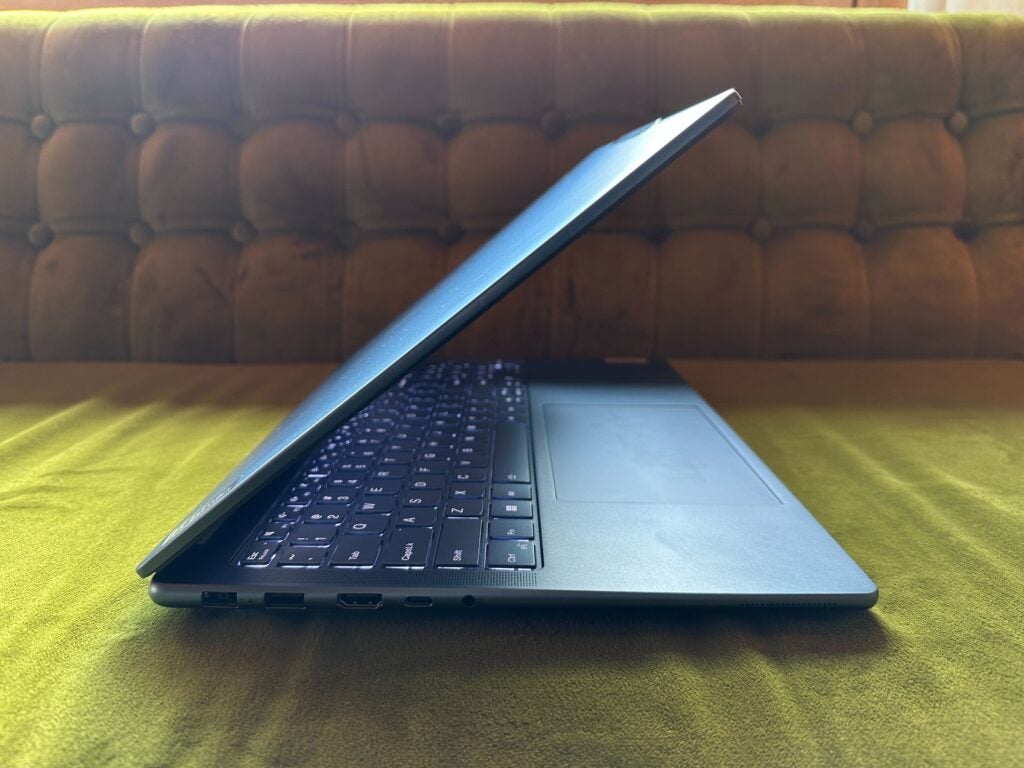
The combination of materials used doesn’t scream luxury – with 50% post-consumer recycled plastic in the keyboard and 50% recycled aluminium – but it is up there in terms of feeling like a truly high-end machine, if falling short of stunning quite like the MacBook Pro (2023).
The Lenovo weighs a bit more and it’s a bit thicker than its Apple rival, across both the 14.5 and 16 inch, but the difference isn’t huge. You will be able to lug this around in your backpack, but you’ll certainly feel the weight. Consider this when choosing your size option.
Along with a strong build overall, I was pleasantly surprised with the keyboard. Lenovo keys, especially away from its Legion gaming line, have often left me cold. However, I found these keys to offer plenty of travel, which it should given the thickness of the laptop, and some pleasingly crisp feedback. The trackpad was extremely responsive too, as well as being a decent size.
Specs and Performance
- Up to a 13th Gen Intel Core i9
- LCD or Mini LED 165Hz panel options
- Up to a Nvidia GeForce RTX 4070
Our main conclusions on the performance of the Lenovo Yoga Pro 9i (2023) will come in our full review when we can put it through the rigours of our benchmark testing but, for now, let’s dive into the specs.
The 14.5-inch model allows for an Intel Core i5-13505H, i7-13705H or an i9-13905H, while the 16-inch ditches the lowest i5 option. Other than that the specs are almost identical across the board.
Another key difference is that the choice of an RTX 4050, RTX 4060 or RTX 4070 graphics chip available on both models is separate by TDP with the smaller model running up to 80W compared to 100W for the 16 inch.
For RAM and storage, it’s 16GB/32GB/64GB and 512GB/1TB SSD respectively. The performance will, of course, differ greatly across these configurations but, at the high end, we’d expect creativity performance that keeps up well with a MacBook Pro and gaming performance that allows for high settings across AAA titles.
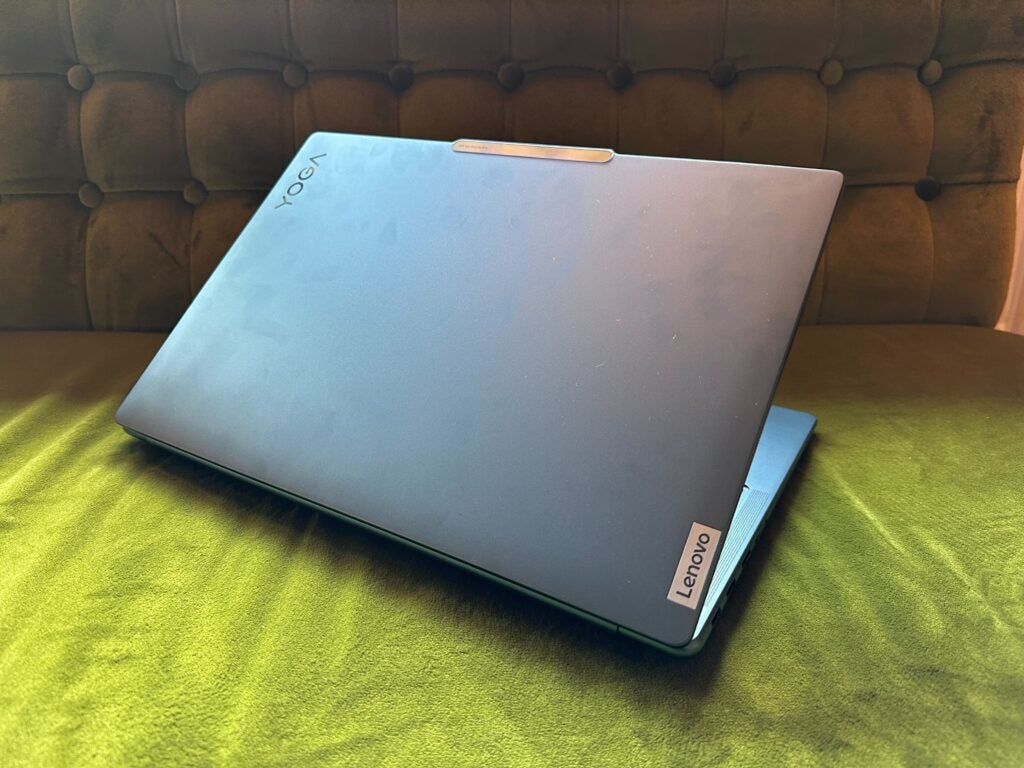
Speaking of games, the panel offers a 165Hz refresh rate that we’d also expect high configurations to be able to top out on FPS-focused titles. The refresh rate isn’t the focus of this display though; it’s the vivid colour and deep contrast you’re getting with the Mini LED technology alongside plenty of details, courtesy of a 3.2K resolution. A cheaper LCD option is available with the same specs too.
In person, I was really impressed with the display with the Mini LED providing exactly what the tech promises: an abundance of bright, luxurious colour.
Early Verdict
The Lenovo Yoga Pro 9i (2023) appears to have gotten a lot of things right. There’s a price that looks reasonable for the performance, but a caveat is required here until we receive full pricing details. You’ll be able to customise your build to either fit mid-tier creative and gaming needs up to something that will accommodate professional creators on the go and higher-end gaming.
The full package is backed up by a keyboard that offers a good first impression and a wondrous display. It’s not the most portable device and other features that I didn’t have the opportunity to test out, like the speakers and webcam, will also play a part in determining if this is up there with the best of them.
EU RRP
CPU
Manufacturer
Screen Size
Storage Capacity
Front Camera
Battery
Size (Dimensions)
Weight
Operating System
Release Date
First Reviewed Date
Model Number
Model Variants
Resolution
Refresh Rate
Ports
GPU
RAM
Connectivity
Colours
Display Technology
Screen Technology
Touch Screen
Convertible?
Jargon buster
SSD
Known as Solid State Drive, this is a faster form of a memory than a standard hard drive. Results in faster loading times and more ambitious games.
IPS panel
IPS stands for In-Plane Switching and offers consistent, accurate colours at wide viewing angles, as well as quick response time
Ethernet
The standard for wired networking. Ethernet can run at different speeds with Gigabit Ethernet (1000Mbps) and 10/100Mbps the most popular.
USB-C
The modern USB connector you’ll find on most Android phones, new laptops, cameras and games consoles. It’s reversible and used for charging along with data-transfer.
The Lenovo Yoga Pro 9i (2023) is another new laptop this year offering a renewed focus on creating a graphically powerful experience, with an eye on competing against the MacBook Pro (2023). The specs look strong but the challenge is tough.
Key Features
-
Luxurious Mini LED Display:Bright and deep colours via Mini LED technology. -
Nvidia GeForce RTX 40-series graphics:Featuring up to an RTX 4070 graphics chip. -
Two different size options:Available in 14.5-inch and 16-inch models
Introduction
Windows laptops offer a lot of choice, some (me, I’m talking about me) might say too much choice. The Yoga Pro 9i (2023) joins Lenovo’s already crowded field. Nevertheless, it looks set to be a strong all-rounder for both gaming and creative types, with the graphics, build and display chops to back it up.
Yes, Lenovo makes a lot of laptops, across its Yoga, IdeaPad, ThinkPad, Legion and, now, LOQ ranges – that’s not even all of them. However, there’s plenty of quality to be found if you look in the right places. The new Lenovo Yoga Pro 9i is a smart play to use Windows’ versatility to give users access to both powerful gaming and demanding creative work. That’s all while keeping the design relatively stylish.
Details are important though. We’d expect the specs of this machine to stand it in good stead performance-wise but nailing a rich user experience – from a quality keyboard, accommodating battery life, decent speakers and more. These will be key to taking on a device like the MacBook Pro (2023) and topping Windows rivals who attempt a similar feat.
We’ll give our full verdict of Lenovo’s new top-of-the-line package in our final review, but I went hands-on last week ahead of launch to get a first look at the laptop. Here are my early thoughts.
Price and Availability
Both the 14.5-inch and 16-inch Lenovo Yoga Pro 9i prices start at €1699 for the base model. I expect the price to rise rapidly as you move up the versions available towards the higher-end specs. We’ve not got UK pricing quite yet.
It’s an appealing price when viewed against top-quality devices like the MacBook Pro and largely falls in line with what we’d expect of Windows rivals. But, it does come in far cheaper than the base Samsung Galaxy Book3 Ultra which starts at £2,449 (~€2783).
Design
- Unassuming yet stylish looks
- High-quality build
- Impressive keyboard
Expectedly, the Lenovo Yoga Pro 9i largely looks like a beefed-up version of the Lenovo Yoga 9i and that’s no bad thing. The rounded edges make for a device that has a smidgen of style rather than something solely functional. There’s an option for a big dose of colour too, with a Tidal Teal hue available, but it was the more standard Storm Grey I saw in person.

The combination of materials used doesn’t scream luxury – with 50% post-consumer recycled plastic in the keyboard and 50% recycled aluminium – but it is up there in terms of feeling like a truly high-end machine, if falling short of stunning quite like the MacBook Pro (2023).
The Lenovo weighs a bit more and it’s a bit thicker than its Apple rival, across both the 14.5 and 16 inch, but the difference isn’t huge. You will be able to lug this around in your backpack, but you’ll certainly feel the weight. Consider this when choosing your size option.
Along with a strong build overall, I was pleasantly surprised with the keyboard. Lenovo keys, especially away from its Legion gaming line, have often left me cold. However, I found these keys to offer plenty of travel, which it should given the thickness of the laptop, and some pleasingly crisp feedback. The trackpad was extremely responsive too, as well as being a decent size.
Specs and Performance
- Up to a 13th Gen Intel Core i9
- LCD or Mini LED 165Hz panel options
- Up to a Nvidia GeForce RTX 4070
Our main conclusions on the performance of the Lenovo Yoga Pro 9i (2023) will come in our full review when we can put it through the rigours of our benchmark testing but, for now, let’s dive into the specs.
The 14.5-inch model allows for an Intel Core i5-13505H, i7-13705H or an i9-13905H, while the 16-inch ditches the lowest i5 option. Other than that the specs are almost identical across the board.
Another key difference is that the choice of an RTX 4050, RTX 4060 or RTX 4070 graphics chip available on both models is separate by TDP with the smaller model running up to 80W compared to 100W for the 16 inch.
For RAM and storage, it’s 16GB/32GB/64GB and 512GB/1TB SSD respectively. The performance will, of course, differ greatly across these configurations but, at the high end, we’d expect creativity performance that keeps up well with a MacBook Pro and gaming performance that allows for high settings across AAA titles.

Speaking of games, the panel offers a 165Hz refresh rate that we’d also expect high configurations to be able to top out on FPS-focused titles. The refresh rate isn’t the focus of this display though; it’s the vivid colour and deep contrast you’re getting with the Mini LED technology alongside plenty of details, courtesy of a 3.2K resolution. A cheaper LCD option is available with the same specs too.
In person, I was really impressed with the display with the Mini LED providing exactly what the tech promises: an abundance of bright, luxurious colour.
Early Verdict
The Lenovo Yoga Pro 9i (2023) appears to have gotten a lot of things right. There’s a price that looks reasonable for the performance, but a caveat is required here until we receive full pricing details. You’ll be able to customise your build to either fit mid-tier creative and gaming needs up to something that will accommodate professional creators on the go and higher-end gaming.
The full package is backed up by a keyboard that offers a good first impression and a wondrous display. It’s not the most portable device and other features that I didn’t have the opportunity to test out, like the speakers and webcam, will also play a part in determining if this is up there with the best of them.
EU RRP
CPU
Manufacturer
Screen Size
Storage Capacity
Front Camera
Battery
Size (Dimensions)
Weight
Operating System
Release Date
First Reviewed Date
Model Number
Model Variants
Resolution
Refresh Rate
Ports
GPU
RAM
Connectivity
Colours
Display Technology
Screen Technology
Touch Screen
Convertible?
Jargon buster
SSD
Known as Solid State Drive, this is a faster form of a memory than a standard hard drive. Results in faster loading times and more ambitious games.
IPS panel
IPS stands for In-Plane Switching and offers consistent, accurate colours at wide viewing angles, as well as quick response time
Ethernet
The standard for wired networking. Ethernet can run at different speeds with Gigabit Ethernet (1000Mbps) and 10/100Mbps the most popular.
USB-C
The modern USB connector you’ll find on most Android phones, new laptops, cameras and games consoles. It’s reversible and used for charging along with data-transfer.

